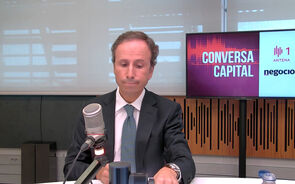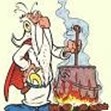Aaron Task- "Oversold Bounce Turns Into Sickening Thud&
1 Mensagem
|Página 1 de 1
Aaron Task- "Oversold Bounce Turns Into Sickening Thud&
Aqui fica o texto de hoje deste excelente jornalista (não analista) Aaron Task. Gosto sobretudo porque nos mostra sempre visões diferentes sobre os mercados.
"Oversold Bounce Turns Into Sickening Thud"
By Aaron L. Task
Senior Writer
01/22/2003 05:30 PM EST
"The "oversold bounce" expected by many arrived Wednesday morning but proved woefully inadequate. The technically driven bounce faltered soon after in the face of deteriorating fundamentals, and selling accelerated as the session progressed. In the end, major proxies closed lower for a fifth-consecutive session.
After trading as high as 8444.61 midmorning, the Dow Jones Industrial Average closed down 1.5% to 8318.73 and a hair off its session low of 8306.60. The S&P 500 tumbled 1% to 873.38 after trading as high as 889.72. The Nasdaq Composite closed off just 0.3% to 1359.58 but off its intraday high of 1379.61.
Once again, the flight of capital out of stocks aided Treasuries, where the price of the benchmark 10-year note rose 15/32 to 100 23/32, its yield falling to 3.91%.
The latest declines for the Dow and S&P, particularly, had market participants talking again about prospects for a retest of the December lows, and perhaps the October nadir as well.
"The battle is now under way for [S&P 500] 867-868," commented Alan Newman, editor of Cross Currents, citing levels just below the S&P's Dec. 31 intraday low. "A failure to hold [the December lows] is expected to lead to a full-scale test of the October 2002 [intraday] low of 768." (Corresponding levels for the Dow are its Dec. 30 intraday low of 8214.93 and October low of 7181.47.)
"Bear catalysts abound," Newman wrote, reiterating a target of 680 for the S&P 500.
That declaration -- issued in a report Monday morning -- seemed particularly prescient Wednesday. In addition to the valuation/sentiment issues detailed here yesterday, plus macro concerns such as the faltering U.S. economy, deteriorating dollar and threat of war, Wednesday's session also featured disappointing quarterly results and/or forecasts from J.P. Morgan Chase, Eastman Kodak, General Dynamics, Merrill Lynch and Schlumberger. (President Bush's latest hawkish comments about Iraq helped send gold futures above $360 per ounce, the highest levels since February 1997, before settling up 0.7% at $359.90.)
Of that group, only Merrill's fourth-quarter results bested analyst expectations. But the brokerage giant said "it will be difficult to maintain 2002 revenue levels in the current year ... absent meaningful improvement in the market environment." Merrill shares fell 4.6% and the Amex Broker/Dealer Index lost 3.4%.
The other names mentioned also ended in arrears, led by General Dynamics, which tumbled 12.4% to a 52-week low of $64.85. Other defense industry firms fell in sympathy, including Raytheon (RTN:NYSE - news - commentary - research - analysis), down 4.8%.
Brett Gallagher, head of U.S. equities at Julius Baer Investment Management, believes "the downside might have a little more room to run."
Short-term indicators that showed the market to be as overbought last week as it was oversold in early October are now only at neutral, he said. These include relative strength, the CBOE Market Volatility Index, put/call ratios, Arms Index, and the Investors Intelligence survey. (On Wednesday, Investors Intelligence reported bullish sentiment was unchanged at 50% while bearish sentiment rose to 28.3% from 27.2% last week. Elsewhere, the VIX rose 5.3% to 32.15.)
Gallagher, who runs about $500 million, maintains a "bearish bias" on stocks, but is less negative about the near to intermediate term, based on factors such as money supply growth, steepness of the yield curve, improvement in corporate bond spreads, prospects for additional fiscal stimulus, and the weakening dollar. (The latter is controversial but Gallagher believes improving profits of U.S. multinationals outweighs the negative effects of a declining dollar, including foreigners repatriating assets.)
"All of these factors are basically related to easier [monetary] policy and can be positives for the market," he said. "At least intermediate term, they somewhat outweigh the negative valuation case."
Julius Baer current has about 7% cash in its U.S. equity portfolio, up from 3% in November but down from a peak of 20% in late September. The firm has a year-end forecast of 875 for the S&P 500 although Gallagher said those aforementioned factors "might allow this to be an up year, albeit with a lot of volatility."
But valuation is the key reason why Gallagher remains bearish about the market's longer-term prospects.
While consensus forecasts for S&P 500 firms' first-quarter earnings have come down to about 10% growth (from 17.4% in October and 11.7% on Dec. 31), he noted fourth-quarter growth estimates are still high, at about 17%. However, the second half of 2002 was better than the first, and so corporations face "tougher comparisons," along with those higher expectations, Gallagher observed. "I think the second half of the year is going to be tougher for the market" as participants start to focus on those challenges.
If Gallagher is right and the market is currently enjoying its "sweet spot" for 2003, the second half is going to be quite sour, indeed.
S's & N's
The Comp's latest bout of relative strength -- glaringly obvious Wednesday -- was fostered by an upbeat forecast from Lucent and better-than-expected earnings by JDA Software which jumped 32%.
Additionally, a better-than-expected December semiconductor book-to-bill report gave a boost to chip-equipment makers such as Applied Materials and KLA-Tencor, although the Philadelphia Stock Exchange Semiconductor Index finished down 0.5% to 292.74.
Lucent reported its 11th-consecutive quarterly loss but reiterated forecasts that revenues would rise going forward. Lucent, whose shares rose 7.7%, cited strong wireless demand.
However, Motorola forecast weaker-than-expected first-quarter results although its fourth-quarter earnings beat expectations. Similarly, RF Micro Devices , which posted better-than-expected fiscal third-quarter results, issued cautious comments about the current quarter. Motorola shares dipped 2.5% and RF Micro lost 7.1%.
Doug Kass of Seabreeze Partners observed on RealMoneyPro.com that the net short position on over-the-counter stocks by commercial traders is currently at its highest level since early 2001. Among other reasons, Kass believes that augurs for continued outperformance by Nasdaq (N's) stocks vs. S&P names (S's).
I asked Kass if he believes the N's cannot only outperform but actually lead the S's out of the wilderness.
"Yes [and] I love the irony of the possibility," he replied. "Why not? The Nasdaq is down 75% and everyone knows the issues of saturation, tepid capital expenditures, etc. The worries are well known and I think that will be one of the great surprises of 2003."
Given the litany of negative factors detailed above, that would indeed be a surprise of large proportions.
After the close, Nasdaq 100 futures were rising -- dragging S&P futures along -- following better-than-expected results and/or positive guidance from tech firms such as Qualcomm, Texas Instruments and PeopleSoft."
(in www.realmoney.com)
"Oversold Bounce Turns Into Sickening Thud"
By Aaron L. Task
Senior Writer
01/22/2003 05:30 PM EST
"The "oversold bounce" expected by many arrived Wednesday morning but proved woefully inadequate. The technically driven bounce faltered soon after in the face of deteriorating fundamentals, and selling accelerated as the session progressed. In the end, major proxies closed lower for a fifth-consecutive session.
After trading as high as 8444.61 midmorning, the Dow Jones Industrial Average closed down 1.5% to 8318.73 and a hair off its session low of 8306.60. The S&P 500 tumbled 1% to 873.38 after trading as high as 889.72. The Nasdaq Composite closed off just 0.3% to 1359.58 but off its intraday high of 1379.61.
Once again, the flight of capital out of stocks aided Treasuries, where the price of the benchmark 10-year note rose 15/32 to 100 23/32, its yield falling to 3.91%.
The latest declines for the Dow and S&P, particularly, had market participants talking again about prospects for a retest of the December lows, and perhaps the October nadir as well.
"The battle is now under way for [S&P 500] 867-868," commented Alan Newman, editor of Cross Currents, citing levels just below the S&P's Dec. 31 intraday low. "A failure to hold [the December lows] is expected to lead to a full-scale test of the October 2002 [intraday] low of 768." (Corresponding levels for the Dow are its Dec. 30 intraday low of 8214.93 and October low of 7181.47.)
"Bear catalysts abound," Newman wrote, reiterating a target of 680 for the S&P 500.
That declaration -- issued in a report Monday morning -- seemed particularly prescient Wednesday. In addition to the valuation/sentiment issues detailed here yesterday, plus macro concerns such as the faltering U.S. economy, deteriorating dollar and threat of war, Wednesday's session also featured disappointing quarterly results and/or forecasts from J.P. Morgan Chase, Eastman Kodak, General Dynamics, Merrill Lynch and Schlumberger. (President Bush's latest hawkish comments about Iraq helped send gold futures above $360 per ounce, the highest levels since February 1997, before settling up 0.7% at $359.90.)
Of that group, only Merrill's fourth-quarter results bested analyst expectations. But the brokerage giant said "it will be difficult to maintain 2002 revenue levels in the current year ... absent meaningful improvement in the market environment." Merrill shares fell 4.6% and the Amex Broker/Dealer Index lost 3.4%.
The other names mentioned also ended in arrears, led by General Dynamics, which tumbled 12.4% to a 52-week low of $64.85. Other defense industry firms fell in sympathy, including Raytheon (RTN:NYSE - news - commentary - research - analysis), down 4.8%.
Brett Gallagher, head of U.S. equities at Julius Baer Investment Management, believes "the downside might have a little more room to run."
Short-term indicators that showed the market to be as overbought last week as it was oversold in early October are now only at neutral, he said. These include relative strength, the CBOE Market Volatility Index, put/call ratios, Arms Index, and the Investors Intelligence survey. (On Wednesday, Investors Intelligence reported bullish sentiment was unchanged at 50% while bearish sentiment rose to 28.3% from 27.2% last week. Elsewhere, the VIX rose 5.3% to 32.15.)
Gallagher, who runs about $500 million, maintains a "bearish bias" on stocks, but is less negative about the near to intermediate term, based on factors such as money supply growth, steepness of the yield curve, improvement in corporate bond spreads, prospects for additional fiscal stimulus, and the weakening dollar. (The latter is controversial but Gallagher believes improving profits of U.S. multinationals outweighs the negative effects of a declining dollar, including foreigners repatriating assets.)
"All of these factors are basically related to easier [monetary] policy and can be positives for the market," he said. "At least intermediate term, they somewhat outweigh the negative valuation case."
Julius Baer current has about 7% cash in its U.S. equity portfolio, up from 3% in November but down from a peak of 20% in late September. The firm has a year-end forecast of 875 for the S&P 500 although Gallagher said those aforementioned factors "might allow this to be an up year, albeit with a lot of volatility."
But valuation is the key reason why Gallagher remains bearish about the market's longer-term prospects.
While consensus forecasts for S&P 500 firms' first-quarter earnings have come down to about 10% growth (from 17.4% in October and 11.7% on Dec. 31), he noted fourth-quarter growth estimates are still high, at about 17%. However, the second half of 2002 was better than the first, and so corporations face "tougher comparisons," along with those higher expectations, Gallagher observed. "I think the second half of the year is going to be tougher for the market" as participants start to focus on those challenges.
If Gallagher is right and the market is currently enjoying its "sweet spot" for 2003, the second half is going to be quite sour, indeed.
S's & N's
The Comp's latest bout of relative strength -- glaringly obvious Wednesday -- was fostered by an upbeat forecast from Lucent and better-than-expected earnings by JDA Software which jumped 32%.
Additionally, a better-than-expected December semiconductor book-to-bill report gave a boost to chip-equipment makers such as Applied Materials and KLA-Tencor, although the Philadelphia Stock Exchange Semiconductor Index finished down 0.5% to 292.74.
Lucent reported its 11th-consecutive quarterly loss but reiterated forecasts that revenues would rise going forward. Lucent, whose shares rose 7.7%, cited strong wireless demand.
However, Motorola forecast weaker-than-expected first-quarter results although its fourth-quarter earnings beat expectations. Similarly, RF Micro Devices , which posted better-than-expected fiscal third-quarter results, issued cautious comments about the current quarter. Motorola shares dipped 2.5% and RF Micro lost 7.1%.
Doug Kass of Seabreeze Partners observed on RealMoneyPro.com that the net short position on over-the-counter stocks by commercial traders is currently at its highest level since early 2001. Among other reasons, Kass believes that augurs for continued outperformance by Nasdaq (N's) stocks vs. S&P names (S's).
I asked Kass if he believes the N's cannot only outperform but actually lead the S's out of the wilderness.
"Yes [and] I love the irony of the possibility," he replied. "Why not? The Nasdaq is down 75% and everyone knows the issues of saturation, tepid capital expenditures, etc. The worries are well known and I think that will be one of the great surprises of 2003."
Given the litany of negative factors detailed above, that would indeed be a surprise of large proportions.
After the close, Nasdaq 100 futures were rising -- dragging S&P futures along -- following better-than-expected results and/or positive guidance from tech firms such as Qualcomm, Texas Instruments and PeopleSoft."
(in www.realmoney.com)
1 Mensagem
|Página 1 de 1
Quem está ligado:
Utilizadores a ver este Fórum: Google [Bot], PAULOJOAO e 31 visitantes



